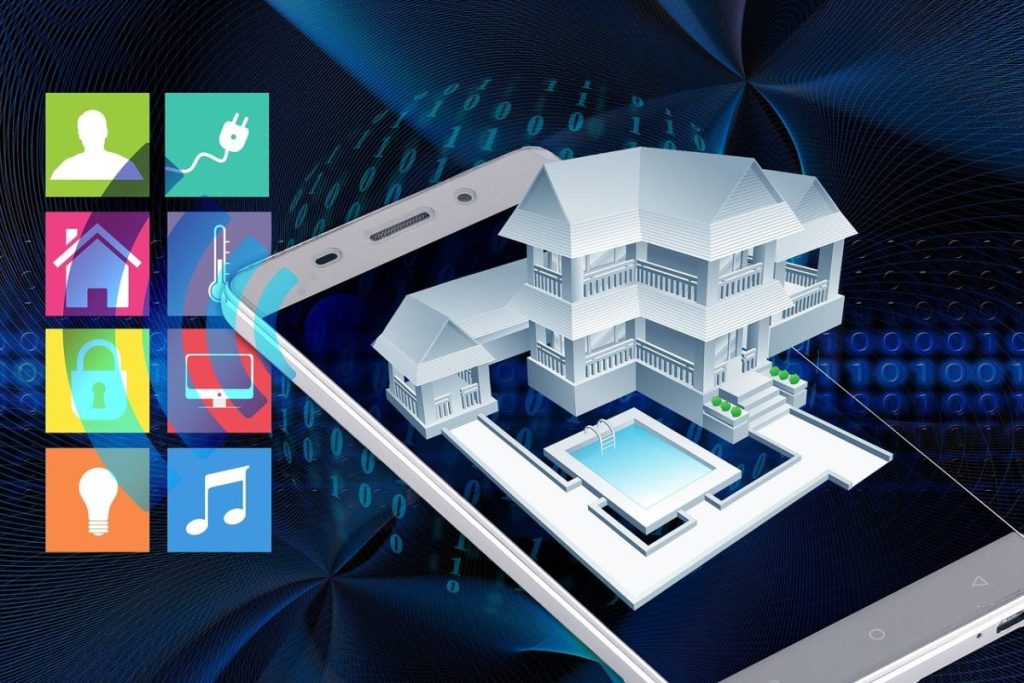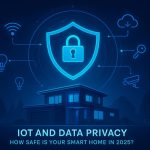IoT Glossary – The Internet of Things (IoT) can seem complex, especially if you’re new to the field. With so many buzzwords and technical jargon, it’s easy to feel overwhelmed. To help you navigate the world of IoT, we’ve compiled a beginner-friendly glossary of 15 essential terms. By the end of this article, you’ll have a solid understanding of the foundational concepts and technologies driving IoT.
1. Internet of Things (IoT)
The network of physical objects—”things”—embedded with sensors, software, and other technologies to connect and exchange data over the internet.
2. Edge Computing
A distributed computing model where data is processed near the source of data generation, such as IoT devices, rather than relying on a centralized data center.
3. Smart Hub
A central device that connects and manages various IoT devices in a smart home, often providing automation and remote control.
4. Mesh Networking
A system where multiple devices (nodes) connect and communicate with each other directly, creating a robust and self-healing network.
5. Actuator
A component in an IoT system that takes action based on a signal, such as opening a valve, turning on a light, or moving a motor.
6. Sensor
A device that detects and measures physical properties, like temperature, motion, or humidity, and converts them into digital signals for processing.
7. MQTT (Message Queuing Telemetry Transport)
A lightweight messaging protocol designed for constrained devices and low-bandwidth networks, commonly used in IoT applications.
8. API (Application Programming Interface)
A set of rules that allows different software programs to communicate with each other, enabling integration and functionality in IoT systems.
9. Cloud Computing
The use of remote servers hosted on the internet to store, manage, and process data, often serving as a backbone for IoT systems.
10. Digital Twin
A virtual replica of a physical object or system used to simulate, monitor, and analyze its real-world counterpart.
11. Firmware
The software embedded in IoT devices that controls their functions and can often be updated to improve performance or add features.
12. Interoperability
The ability of different IoT devices, systems, or platforms to work together seamlessly.
13. Low Power Wide Area Network (LPWAN)
A type of wireless network designed to connect IoT devices over long distances with minimal power consumption.
14. Blockchain
A decentralized ledger technology used to securely record and verify data exchanges, increasingly adopted for enhancing IoT security and transparency.
15. Z-Wave
A wireless communication protocol specifically designed for home automation, allowing devices to connect and operate on a low-frequency band.
Understanding these key IoT terms is a great first step toward grasping the technology’s potential. Whether you’re setting up your first smart home or exploring IoT for business applications, these concepts form the foundation of IoT knowledge. Keep this glossary handy as you delve deeper into the fascinating world of connected devices!
- Designing a Smarter Home in 2026: What People Get Wrong About Automation
 Smart homes were once science fiction, but today they’re a reality in millions of households. With voice assistants, smart plugs, and automated lighting systems, it’s easy to assume home automation is simply a matter of plugging in a few devices. Yet, many homeowners quickly discover that “smart” doesn’t always mean simple. In this article, we’ll…
Smart homes were once science fiction, but today they’re a reality in millions of households. With voice assistants, smart plugs, and automated lighting systems, it’s easy to assume home automation is simply a matter of plugging in a few devices. Yet, many homeowners quickly discover that “smart” doesn’t always mean simple. In this article, we’ll… - Automated Online Trading: How IoT is Redefining Financial Markets
 Introduction automated online trading In a world where milliseconds can decide millions, the fusion of Internet of Things (IoT) technology and automated online trading is reshaping global finance. What once relied solely on human judgment now increasingly depends on connected machines, real-time data, and predictive algorithms. From weather sensors influencing agricultural trades to smart logistics…
Introduction automated online trading In a world where milliseconds can decide millions, the fusion of Internet of Things (IoT) technology and automated online trading is reshaping global finance. What once relied solely on human judgment now increasingly depends on connected machines, real-time data, and predictive algorithms. From weather sensors influencing agricultural trades to smart logistics… - The Role of Linux in IoT: Powering the Connected World
 The Internet of Things (IoT) is everywhere—from smart homes and wearable devices to industrial automation and self-driving cars. Behind the scenes, one operating system plays a surprisingly dominant role: Linux. Known for its stability, flexibility, and open-source nature, Linux has become the backbone of countless IoT devices and platforms. But what makes Linux so well-suited…
The Internet of Things (IoT) is everywhere—from smart homes and wearable devices to industrial automation and self-driving cars. Behind the scenes, one operating system plays a surprisingly dominant role: Linux. Known for its stability, flexibility, and open-source nature, Linux has become the backbone of countless IoT devices and platforms. But what makes Linux so well-suited… - The Smart Home Revolution in 2025: How IoT is Transforming Everyday Living
 In the past decade, the vision of a truly smart home has moved from futuristic fantasy to everyday reality. As we step into 2025, the Internet of Things (IoT) has matured into a robust ecosystem, connecting appliances, security systems, lighting, and even entertainment devices under one seamless digital roof. The result? Homes that are safer,…
In the past decade, the vision of a truly smart home has moved from futuristic fantasy to everyday reality. As we step into 2025, the Internet of Things (IoT) has matured into a robust ecosystem, connecting appliances, security systems, lighting, and even entertainment devices under one seamless digital roof. The result? Homes that are safer,… - IoT and Data Privacy: How Safe Is Your Smart Home in 2025? – IoT Security
 The smart home revolution has made everyday life more convenient than ever. From voice assistants that control the lights to security cameras that send alerts directly to your phone, connected devices have become part of our daily routines. But with this convenience comes an important question: how safe is your personal data in a world…
The smart home revolution has made everyday life more convenient than ever. From voice assistants that control the lights to security cameras that send alerts directly to your phone, connected devices have become part of our daily routines. But with this convenience comes an important question: how safe is your personal data in a world…







